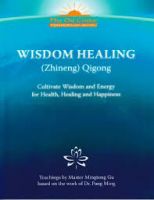Increasing Strength with Tai Chi and Qigong
 Have you been searching for a gentle, but effective form of exercise? You may want to consider Tai Chi or Qigong. Beyond increasing flexibility, research has shown that muscle, bone, and even memory strengthen with regular practice of either of these ancient Chinese practices. If you can’t picture yourself running or working out with weights, you can still get all of the benefits, and more, by incorporating these exercises into your routine. Older people in particular find tai chi and qigong easy to do and may appreciate the improvements to balance and enhanced”fall reduction.”
Have you been searching for a gentle, but effective form of exercise? You may want to consider Tai Chi or Qigong. Beyond increasing flexibility, research has shown that muscle, bone, and even memory strengthen with regular practice of either of these ancient Chinese practices. If you can’t picture yourself running or working out with weights, you can still get all of the benefits, and more, by incorporating these exercises into your routine. Older people in particular find tai chi and qigong easy to do and may appreciate the improvements to balance and enhanced”fall reduction.”
Just this week, Jane E. Brody wrote in The New York Times article Using Tai Chi to Build Strength, “Don’t get scared by its frequent description as an “ancient martial art.” Tai chi (and a related exercise called Qigong) does not resemble the strenuous, gravity-defying karate moves you may have seen in Jackie Chan films. Tai chi moves can be easily learned and executed by people of all ages and states of health, even those in their 90s, in wheelchairs or bedridden.”
The National Institutes of Health have studied and recommended both qigong and tai chi in various articles. In addition to increasing muscle and bone strength, tai and qigong have been used to:
 Enhance memory and cognition
Enhance memory and cognition- Halt or reverse Parkinson’s
- Treat chronic pain
- Reduce stress and cortisol production
- Reduce high blood pressure
- Reduce inflammation and arthritis
Regular practice has also been shown to reduce or reverse bone density loss, a growing concern for our aging population. Even if you don’t feel you need to “get in shape,” increased balance and bone strength mean fewer falls, fewer breaks, and fewer trip to the emergency room!
 Click here for our podcast interview with Mingtong Gu
Click here for our podcast interview with Mingtong Gu
Click here for our review of Wisdom Healing (Zhineng) Qigong: Teachings by Mingtong Gu
